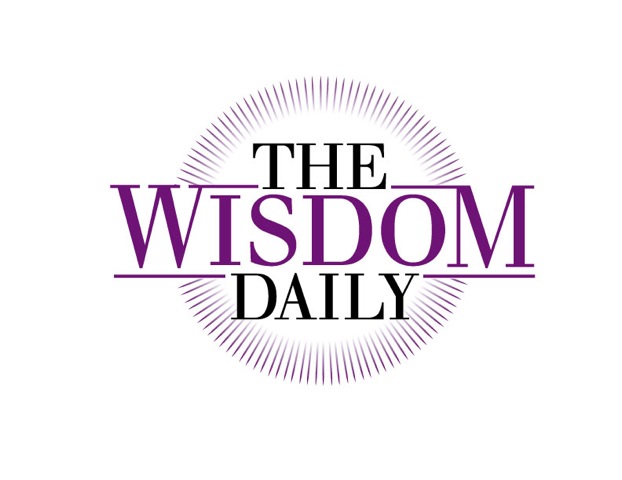As kids, we were handed a script for hurt. Mikey says, “I’m sorry.” Rachel answers, “I forgive you.” Everyone moves on. That script falls apart in adult life, for example, when a lover ghosts, a parent dies without apologizing, or an oppressor keeps oppressing. So is forgiveness still important—or even appropriate—in moments like these?
In recent years, researchers have mapped real benefits of forgiveness for mental and physical health, relationships, and even community life. Still, people resist taking on the hard work of forgiveness. I think this is because what scientists study, and what produces all those benefits, isn’t usually what people think of when they think of forgiveness.
The Greater Good Science Center defines forgiveness as “a conscious, deliberate decision to release feelings of resentment or vengeance toward a person or group who has harmed you, regardless of whether they actually deserve your forgiveness.” That clashes with our instinct that letting go equals letting someone who has hurt us “off the hook.” With practice, forgiveness becomes an act of power: By releasing bitterness, we stop allowing the offender to keep causing damage in our lives. As Dr. Fred Luskin says, “a life well lived is your best revenge.”
Over the last year, I’ve interviewed over 30 religious leaders—pastors, rabbis, imams, and folks with influence in spiritual communities—on the role of forgiveness in their work. I’ve been learning in-depth about how their theology of forgiveness might integrate with the science of forgiveness. There’s a felt difference when the conversation turns from theoretical to personal. Even in my day-to-day, when I tell someone I’m working on a forgiveness project, I see a particular pain rise behind their eyes. It’s easy to think of someone to forgive; you’ve probably ruminated about them at 2:00 a.m. The good news: Meaningful healing can begin quickly if you take a few structured steps.
What follows blends Dr. Luskin’s Nine Steps to Forgiveness with Everett Worthington’s REACH model. In my research for my projects, I found that these two famous therapeutic interventions overlapped a lot in their approach and were both thoroughly supported by research. Luskin’s emphasis on self-care (nervous system regulation) and Worthington’s moral framing (emphasizing the altruistic gift) can combine for a balanced approach.
A quick note: If the hurt involves trauma and the pain you are experiencing is severe, pair this with professional support.
Day 1: Choose the target and name your stakes
Grab a pen. Name one person or situation to work with. What happened—and what, exactly, was the harm it caused? How do you feel that harm even now? Write it in first person, using “I” language. End with a boundary: What would need to be true in order for reconciliation to ever be possible? If you have a trusted confidant, say this out loud to them in order to anchor it.
Day 2: Decisional forgiveness
Another core distinction that psychologists make is the difference between “decisional” and “emotional” forgiveness. Decisional forgiveness is the commitment; emotional forgiveness is the felt shift that often follows. Start with the commitment and make the choice visible. Write a two-sentence commitment (or draft a simple contract) that articulates simply what you’re forgiving and why you’re doing it. Your why should be a way your life will be better when you let go of the hurt. If it helps, write it as a note, explaining your decision to a trusted friend (whether you share it or not).
Day 3: Soothe your body, shorten the fuse
Make a game plan for when the hurt is most active. What does that feel like, and what will you do to regulate yourself? Acknowledge the feelings and identify a ritual that could help you. Make sure it’s one you’ll actually use. For example, for three minutes, make your exhale longer than your inhale; or do a 5-senses grounding meditation; or a one-page vent journal you’ll never reread. Pick one, test it today, and note what worked.
Day 4: Recall as an observer
On Day 1, you wrote a subjective account of what happened to you. Today, rewrite the story in third person, as if you’re a journalist: where, when, how, what. Keep it factual; resist villainizing. Then jot down three differences between this account and your Day 1 version.
Day 5: Build compassion for the other person
If you’ve made it this far, give yourself a high five! This is not easy work. If you find yourself struggling, especially with this next step, remember to access your grounding ritual. It’s okay to create a little space by adopting a curious posture about your inner world— you are trying to map your emotional terrain rather than reliving the past.
On this day, make a list of factors that could have shaped the behavior of the person who harmed you: situational pressures, blind spots, systemic influences, and human limits. These are not excuses for their behavior; rather, they widen perspective. If it doesn’t overwhelm you, imagine their inner monologue before the harm.
Day 6: Experiencing and giving grace
Recall a time you were forgiven, even when you didn’t feel you deserved it. How did it feel to be forgiven anyway? Now, challenge yourself to write a private note offering forgiveness to the person who harmed you, even if you’re not sure you forgive them yet. No one needs to see it. When you finish, practice your Day 3 grounding ritual.
Day 7: Commit, then ride the waves
Say it out loud to someone you trust—what you’re forgiving, why it matters, and how you want to feel—so the choice exists outside your head. Then, because this may evoke big emotional responses for you, give yourself a cue and phrase you’ll use when you start to feel shaky. Taking these steps will be huge for your healing, but you also need to plan for the future, when emotional lows strike again.
Picture two likely triggers of these negative feelings. A social media post might remind you of the person who harmed you, or out of nowhere a bad mood might start making demands. Mentally rehearse your response (e.g. your grounding ritual, phoning a friend, working on a creative project).
When anger swings back, treat it as training data, not failure. This is normal and human. Note what set it off, what helped, and keep going. Honoring your commitment never requires resuming contact or dropping safeguards; you can keep the boundary up while you unclench your jaw.
Day 8 and beyond — Reclaim your power and design a life well lived
Scan for any prerequisites you’ve been waiting on in order to be able to forgive the person who hurt you (“They must admit it,” “I can’t move on until…”) and set them down. Other people’s choices aren’t yours to manage; your energy is. Name the harm, affirm you didn’t deserve it, then redirect your energy to constructing your future:
- What would “better than before” look like in your body? Choose one sign of ease you want to see.
- How about in your relationships? Choose one boundary or bid for connection you want to create.
- Finally, what about in your calendar? Find one small pocket of rest or a passion project you want to schedule for yourself. Give yourself the care you hoped for from others—on purpose, today. Beginning again doesn’t require an apology or a holiday; it just needs you.
We don’t have to whitewash harm or pretend it didn’t happen to make room for healing. Justice, accountability, and boundaries can stand alongside the forgiveness you cultivate within. If you invest in these practices for even a couple of weeks, your heart may loosen its grip on the unchangeable past, opening space to notice the beauty and possibility of the present. And while the point is your well-being, forgiveness rarely stays siloed; as you heal, that sense of freedom and grace just may have a way of spreading.

